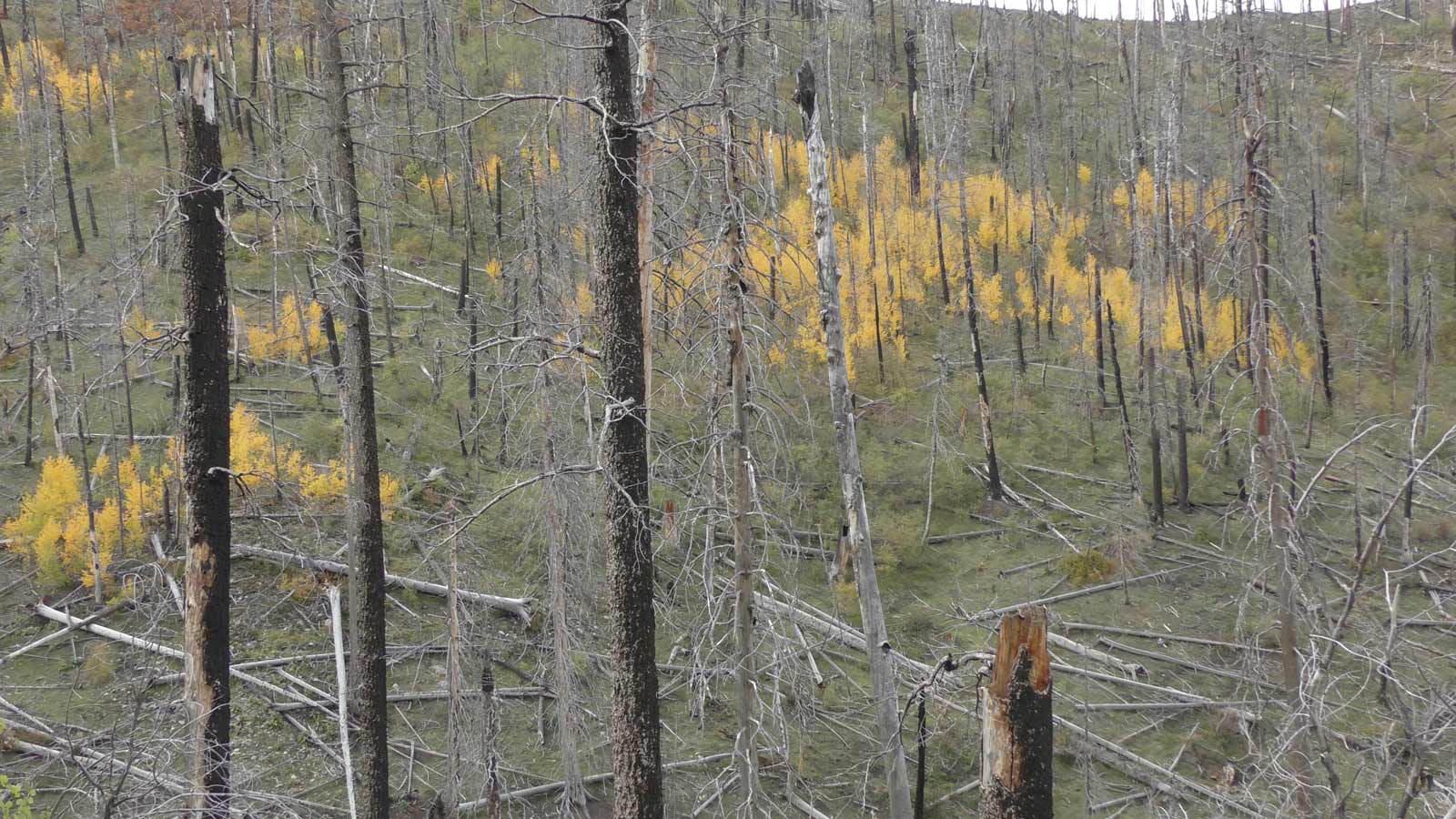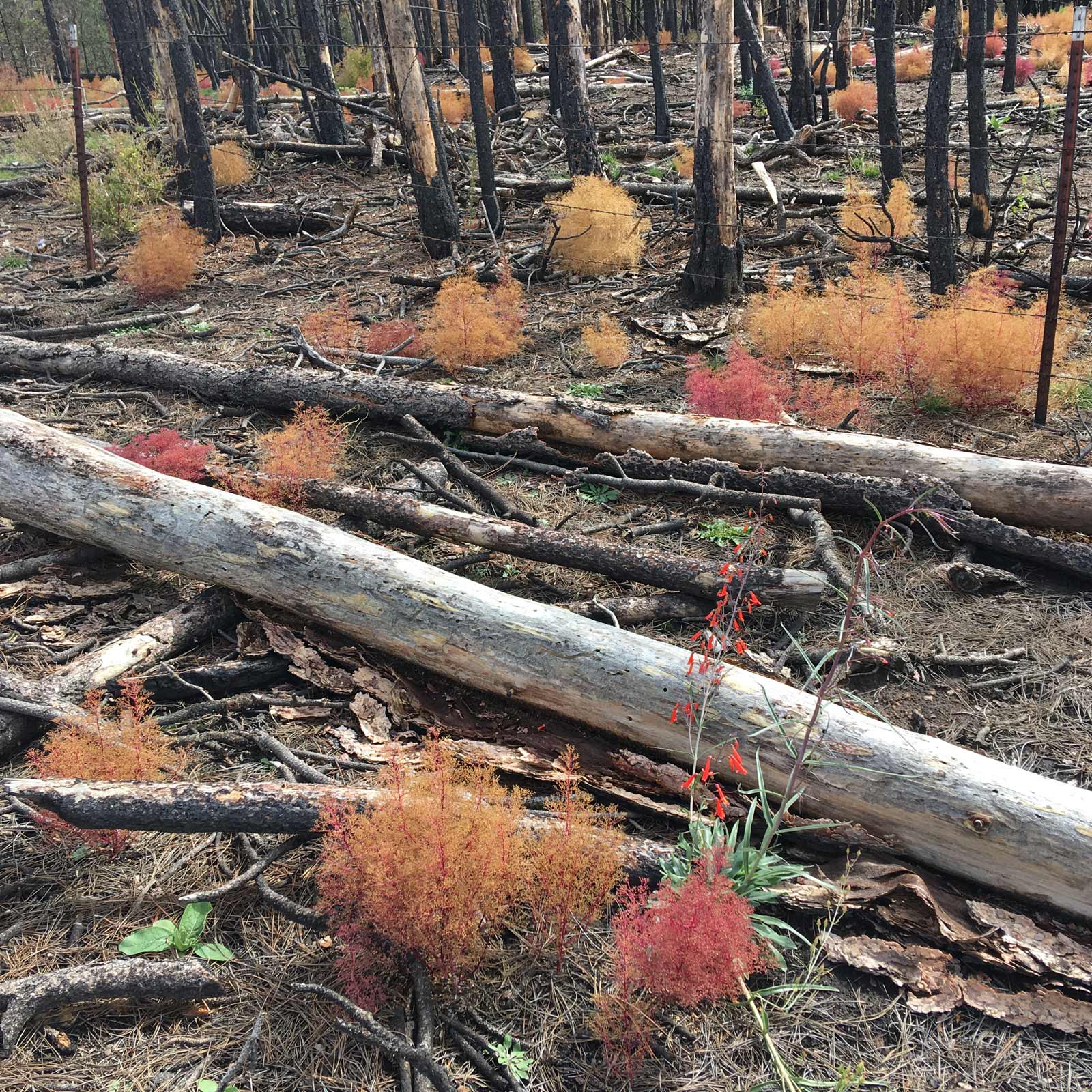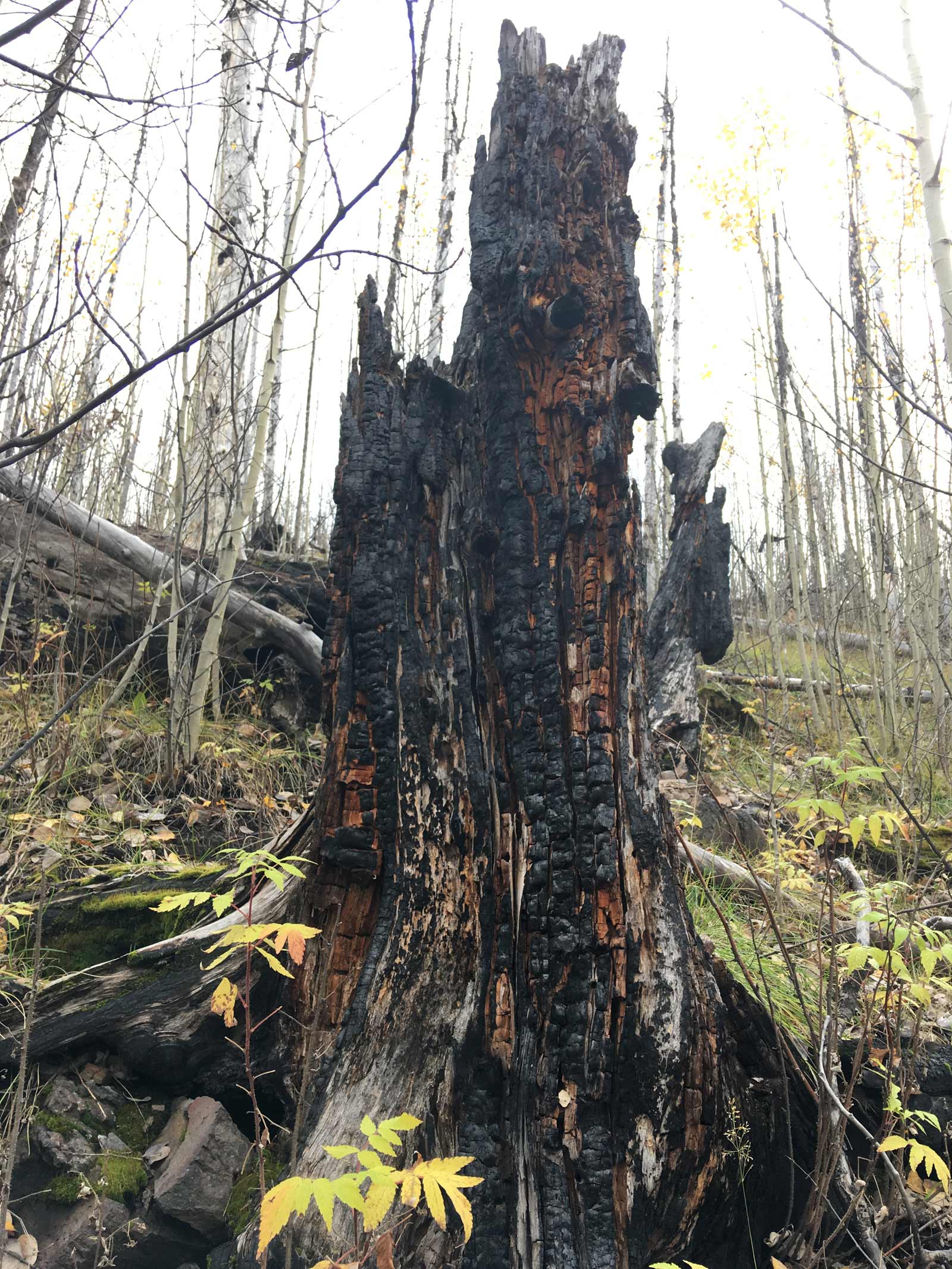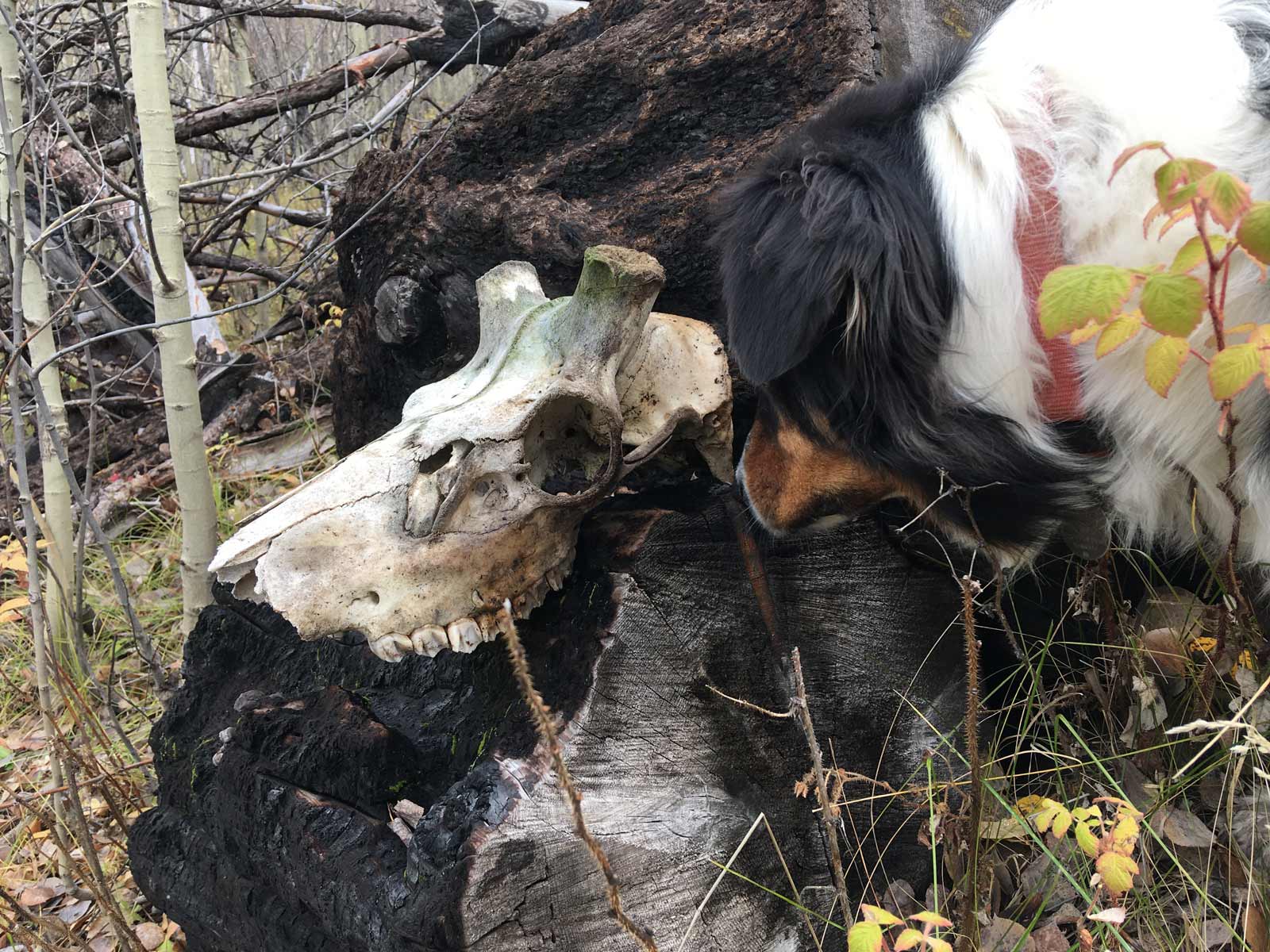Yesterday, Nancy drove our old Ford Ranger up into the Jemez, to revisit the burned-up trees I had photographed one year after the 2011 Las Conchas fire destroyed 244 square miles in the Jemez mountains, a part of the Santa Fe National Forest.
It takes a century for a pinyon forest to return to what it was before a fire. The Jemez are mostly pine trees, not pinyons or cedars, and within the pine forest are ponderosa pines, which grow straight as an arrow, often have diameters of over three feet, and tower far into the sky. They make beautiful burnt corpses. The smaller pines are a lot less interesting, either alive or dead—when they look like matchsticks blown down by a hurricane.
Seven years after the disaster, aspens have returned, and in fall, they dried into their famous yellows and oranges, banners of color scattered here and there in a landscape of charred black death. Green grass covers the ground. A person way down in one valley has rebuilt a hunting retreat that must have been burned down to the foundation. The lovely little cabin is surrounded on all sides by tall dead pines. Unlike California, where the recent fires have been so lethal and have destroyed so many homes, very few homes exist inside of the National Forests of New Mexico.
It is an irony of destruction that the Jemez forest is so beautiful as it struggles to slowly come back to life. Among the dead trees, weeds had arrived, yellow, pink, and purple in the beautiful fall day.
What hadn’t returned were the pines, which make up 90 percent of the forest. A few had begun to grow at the edge of the road. And along Highway 4, the heroic workers of the Forestry Department had begun to plant them, each precious tree protected from deer and elk by a small plastic fence. I doubt whether one hundredth of 1 percent of the forest has been replanted.
As Nancy wrestled our old Ford Ranger down a dirt road that included a series of rock ledges, a man came walking up toward us. A Native American, he stopped by the open truck window to talk. He was from the nearby Santa Domingo Pueblo, he said. I asked if he knew Lila Bird, an old friend who had received a PhD from the University of New Mexico in the Seventies.
“She is my sister,” he said.
“You mean, your real sister, or your auntie, or soul brother, or what?”
“No, she really is my sister. I am Ray Bird,” he said, laughing.
“Tell Lila to come visit us,” I said. “A lot of aspens are coming back. But I don’t see any pines.”
“And those aspens have to die before the pines return.”
“I don’t think the forest will return in our lifetime,” I said.
“This forest won’t return in the lifetime of our grandchildren,” said Mr. Bird.
Nancy mentioned that the tailpipe of the truck was making a noise, probably from shaking loose as we went over the rock ledges of the road. She drove the truck on toward Los Alamos, then took a by-road toward Bandelier. That’s where the muffler fell off. We dragged it along the pavement for a hundred yards, then pulled over to wait for help. Just like all of us here on Planet Earth.






